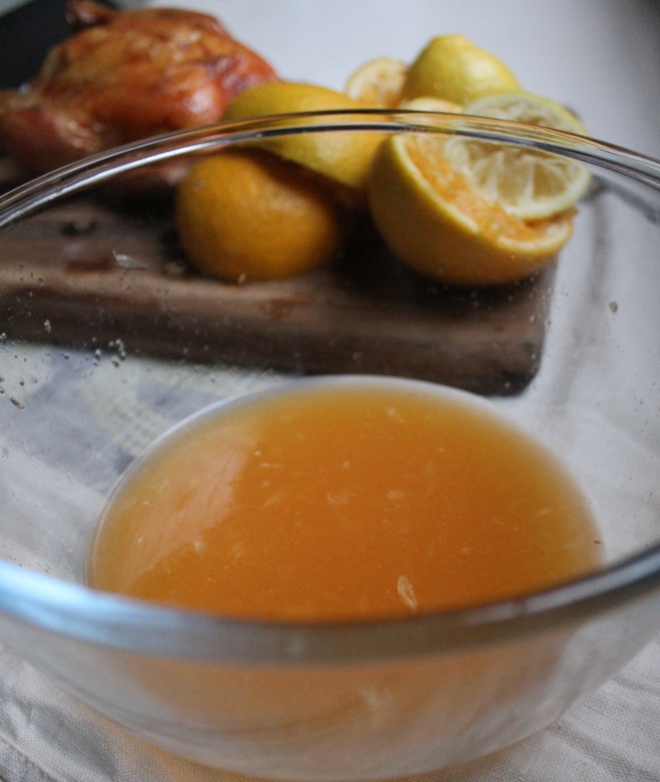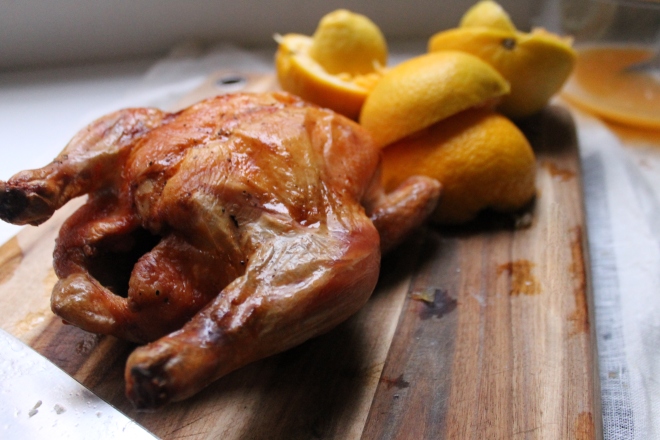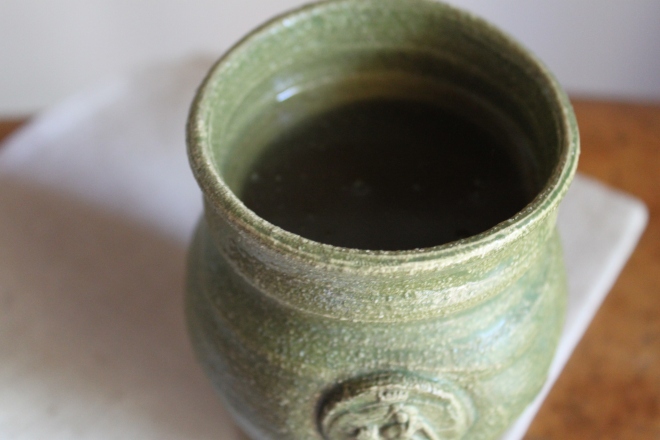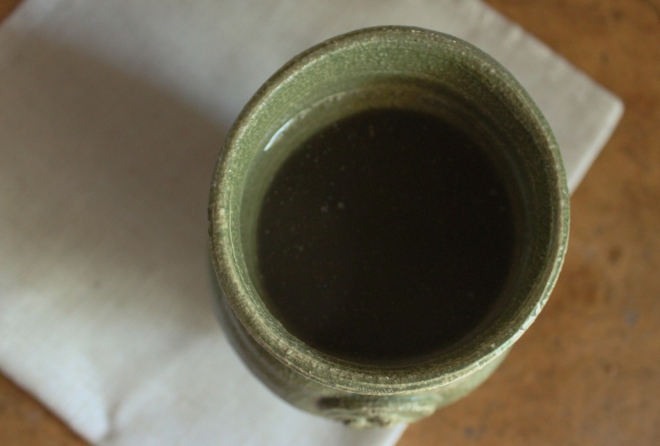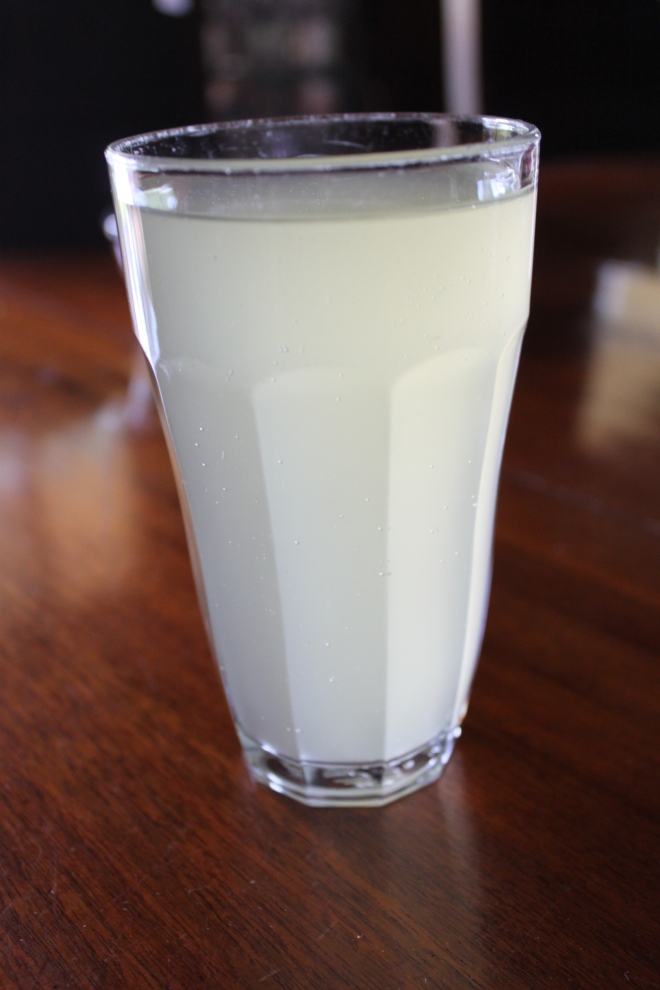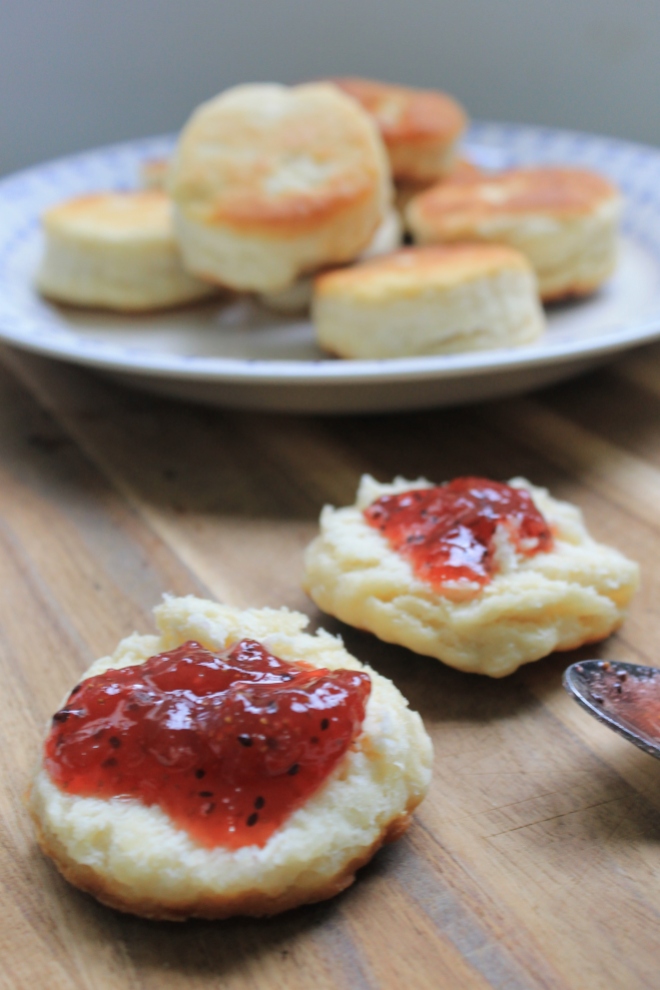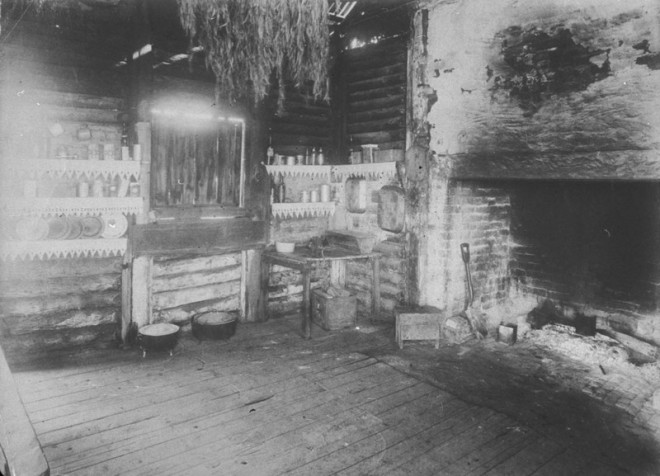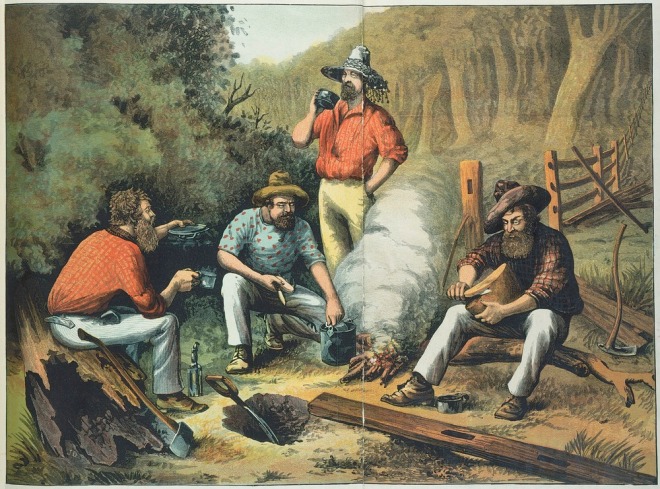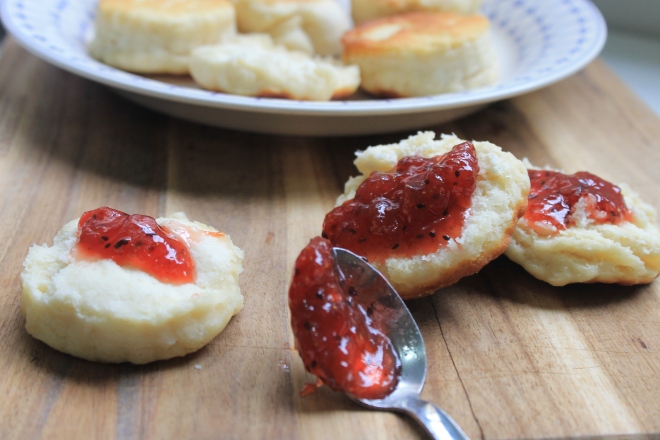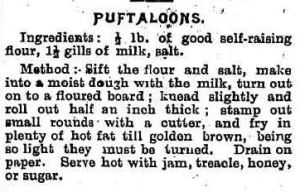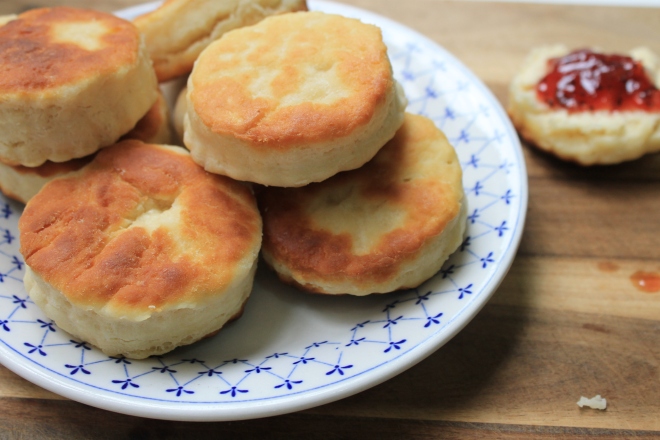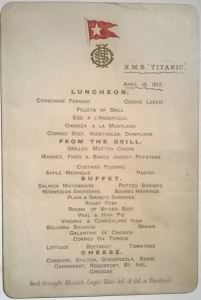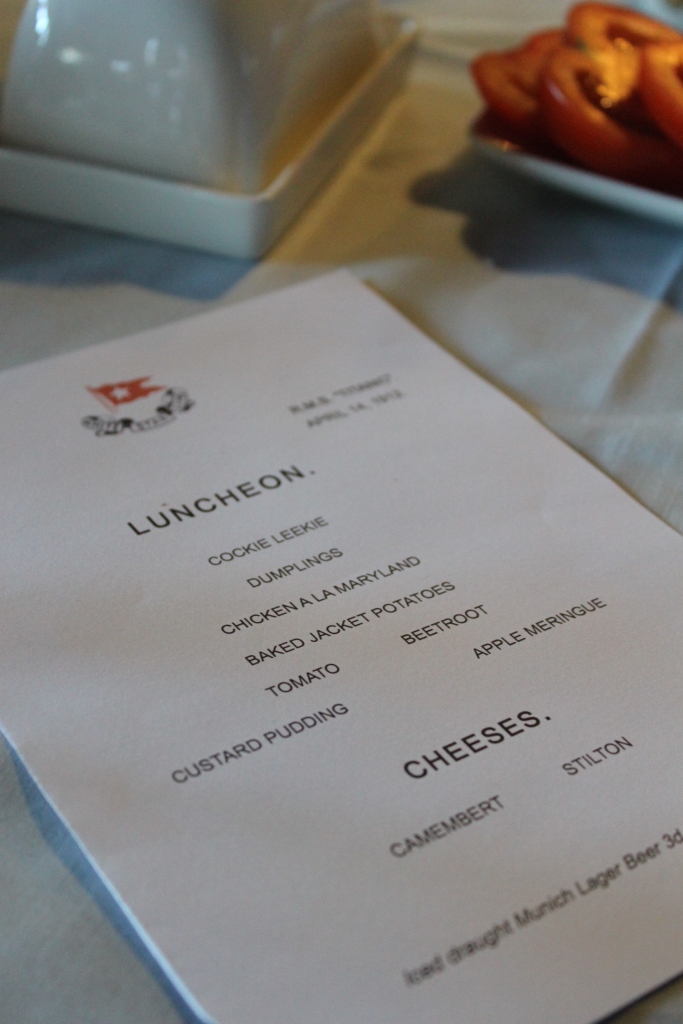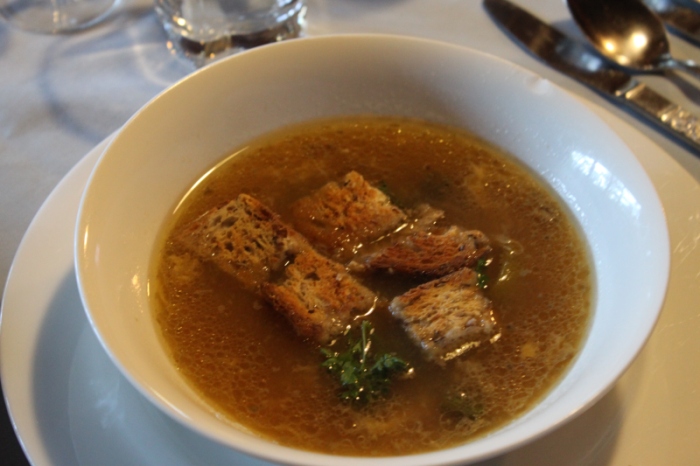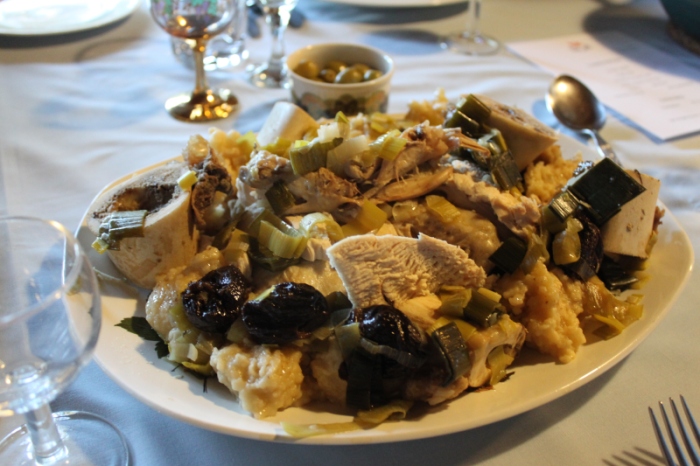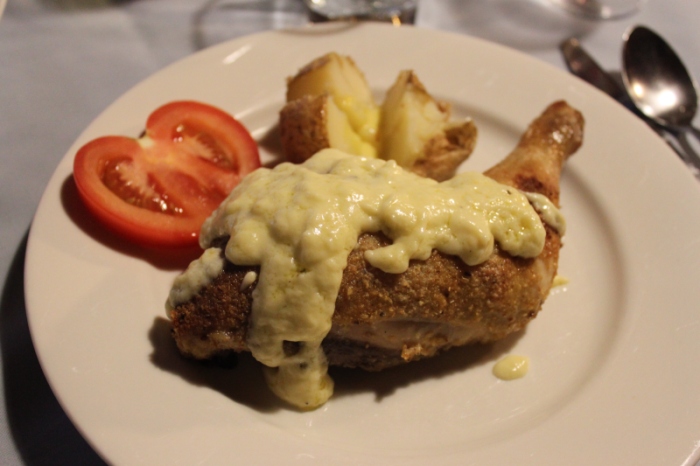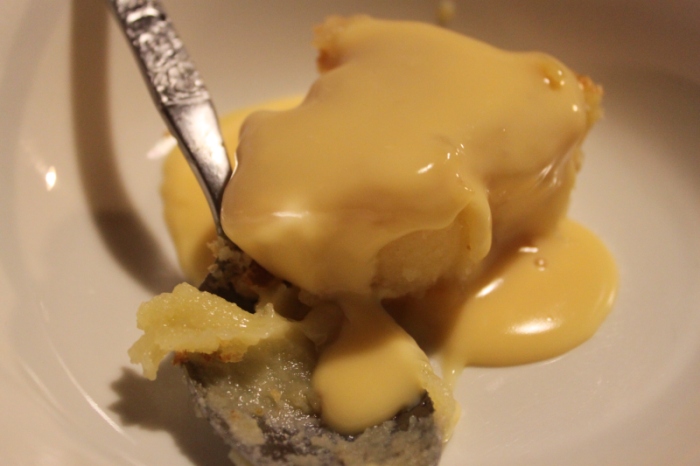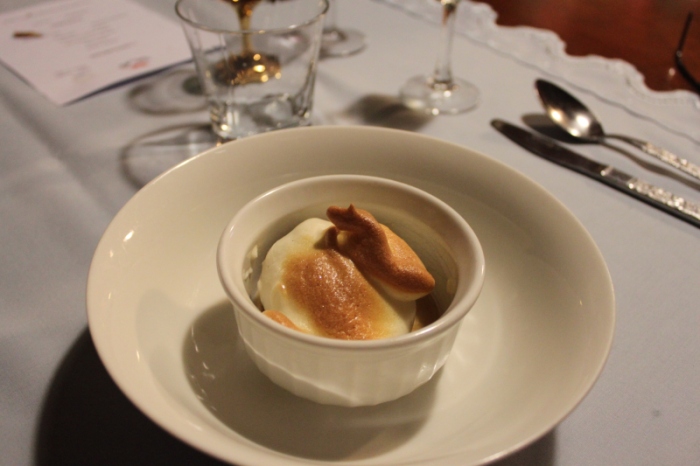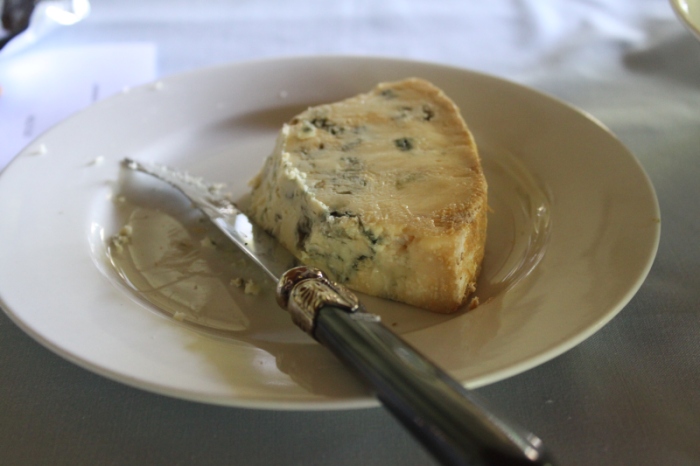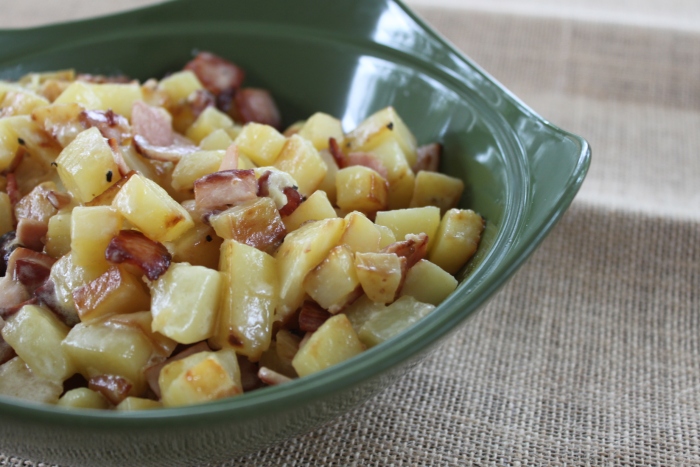 It’s a new year, and a new round of Historical Food Fortnightly Challenges (and of course I’m already running late!). If you missed the last one, the HFF is a series of themed challenges where you choose a historical recipe (from before 1960) and follow it as closely as you can. Of course it’s not possible to be completely accurate, modern cooks have budget constraints, modern (for the most part) kitchens, and some ingredients are impossible to find, but we do our best. If you want to find out more about the challenge, the challengers or the different themes then head to the HFF blog to read all about it.
It’s a new year, and a new round of Historical Food Fortnightly Challenges (and of course I’m already running late!). If you missed the last one, the HFF is a series of themed challenges where you choose a historical recipe (from before 1960) and follow it as closely as you can. Of course it’s not possible to be completely accurate, modern cooks have budget constraints, modern (for the most part) kitchens, and some ingredients are impossible to find, but we do our best. If you want to find out more about the challenge, the challengers or the different themes then head to the HFF blog to read all about it.
The first challenge of the year is ‘Meat and Potatoes’, and I’ve interpreted this quite literally with a recipe for bacon and potatoes. I feel a bit bad doing this recipe after Betsy’s impassioned plea to primary sources, so Betsy I apologise in advance. The impetus for this post came from a good friend of mine who gave me William Sitwell’s A History of Food in 100 Recipes for Christmas. At number 26, tucked in between zabaglione and trifle, is a recipe for earth apples from Marx Rumpolt’s Ein new Kochbuch (1581).
“Peel and cut them small, simmer them in water and press it well out through a fine cloth; chop them small and fry them in bacon that is cut small; take a little milk there under and let it simmer therewith so it is good and well tasting.”[1]
Sitwell translates earth apples, or erdäpfel/erdtepffel in German, as potatoes and calls this recipe the earliest surviving recipe using potatoes. However, this is a very controversial claim, although maybe not for the reason you think. On blogs and message boards across the internet there is a powerful undercurrent that this recipe refers not to potatoes, but to some type of squash. The closest that I’ve come to an explanation for this comes from The Potato: A Global History when Andrew Smith claims that the German folklorist and historian Günter Wiegelmann maintains that the earth apples are a type of round squash.[2] Unfortunately, since there’s no reference for this claim and since I can’t read German I haven’t been able to follow it up any more. Dr Thomas Gloning form the University of Giessen has also cast doubt upon the potato identification when posting on message-boards, seemingly on linguistic grounds.[3] Similar references in Anna Wecker’s Ein Kostlich New Kochbuch have also been refuted.[4]
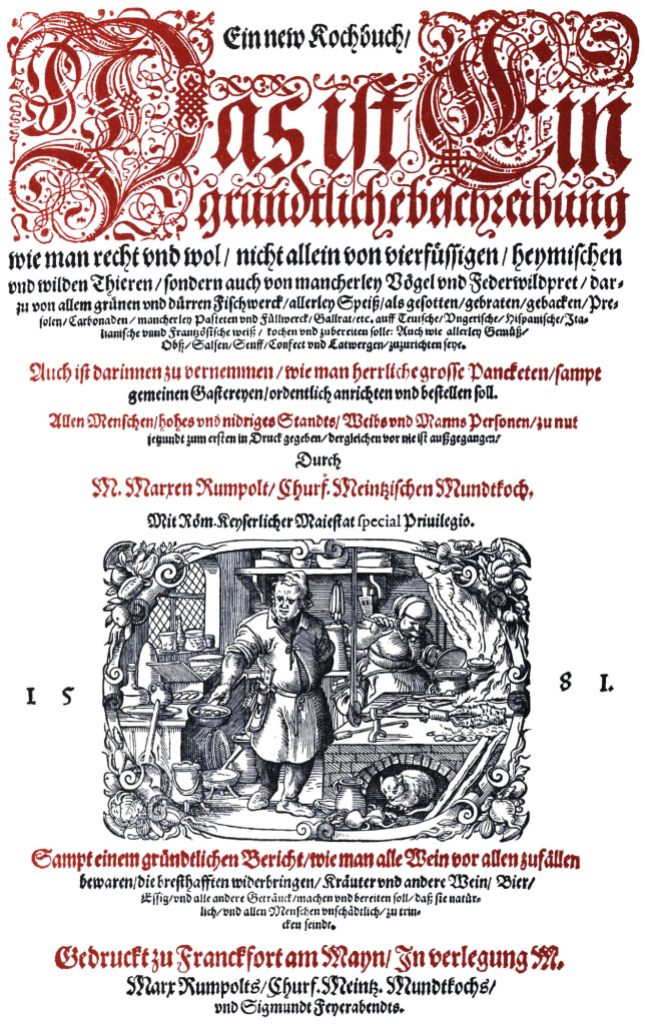
Frontispiece from Ein New Kochbuch, 1581, [Public Domain], via Wikimedia Commons
According to Smith, Wiegelmann describes the earliest recipe as boiled potatoes cooked simply in butter.[8] The recipe came from a letter sent in 1581 by Wilhelm IV von Hessen to the Elector of Saxony, Christian I. Gloning also quotes Wiegelmann and gives a rough translation for what seems to be the same recipe but gives the date as 1591.
“We also send to your Highness among other things a plant that we got from Italy some years ago, called Taratouphli (…) Below, at the root, there hang many tubers. If they are cooked these tubers are very good to eat. But you must first boil them in water, so that the outer shell (peeling?) gets off, then pour the cooking water away, and cook them to the point in butter.”[9]
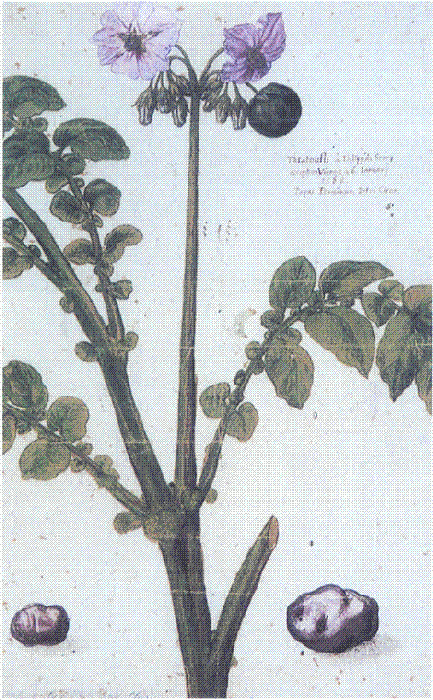
A potato plant in flower, watercolour sent by Philippe de Sivry to Clusius in 1588. There is a better, but copyrighted, version of this picture available on the website of the Museum Plantin-Moretus. See page for author [Public Domain], via Wikimedia Commons.
These potatoes were probably the type of potato that was described by Clusius in 1601: small and smooth, with beetroot red skin, white flesh and deep eyes.[10] There appears to have been a second introduction of potatoes to England in around 1590 and a different type was described by the John Gerard in 1597, these potatoes were white, irregularly shaped with yellow flesh and deep eyes.[11] Gerard explained that the potatoes could be roasted or boiled and suggested serving them with oil, salt and pepper.[12]
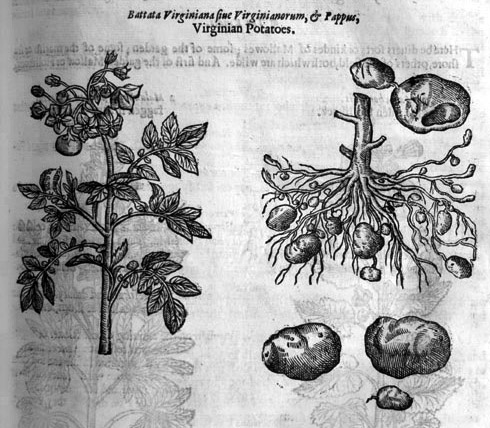
Potatoes from Gerard’s Herball – By McLeod [Public Domain], via Wikimedia Commons
The Redaction
A Dish of Earth Apples
4 medium sized potatoes
160g bacon
Butter and oil to fry
1/2 cup of milk
Salt and pepper (optional, not listed in the original)
- Bring a large pan of water to the boil. Peel the potatoes and cut them into quarters. Place the potatoes in the boiling water and cook until just tender. Drain the potatoes and leave to cool a little.
- Heat a large frying pan over a medium-high heat and add some butter and oil. Chop the bacon into 1 cm cubes and fry until golden. Meanwhile, chop the potatoes into 1 cm cubes. Add to the bacon and fry until golden and crunchy.
- Lower the heat and add the milk. Simmer gently for 5 mins. Add salt and pepper if using. Serve hot.
The Round-Up
The Recipe: Erdäpfel from Marx Rumpolt’s Ein new Kochbuch (translation found in William Sitwell’s A History of Food in 100 Recipes)
The Date: 1581
How did you make it? See above.
Time to complete?: 40 mins.
How successful was it?: A little bland, but very comforting. Warm and stodgy in the best possible way.
How accurate?: Well, potato/gourd issue aside, there are no quantities or times given so everything was a bit of guesswork. The quantity of milk in particular was hard to know. Should the potatoes be swimming in it?
[1] William Sitwell, A History of Food in 100 Recipes (New York: Little, Brown & Company, 2013), 85.
[2] Andrew Smith, Potato: A Global History (London: Reaktion Books, 2011), 53–54.
[3] Thomas Gloning, “SC – Re: 16th Century Potato Soup Recipe?,” Stefan’s Florigelium, March 27, 1999, http://www.florilegium.org/?http%3A//www.florilegium.org/files/FOOD-VEGETABLES/potatoes-msg.html.
[4] Smith, Potato: A Global History, 54.
[5] J. G. Hawkes and J. Francisco-Ortega, “The Early History of the Potato in Europe,” Euphytica 70, no. 1–2 (January 1993): 1–7, doi:10.1007/BF00029633; J. G. Hawkes and J. Francisco-Ortega, “The Potato in Spain during the Late 16th Century,” Economic Botany 46, no. 1 (1992): 86–97.
[6] Hawkes and Francisco-Ortega, “The Early History of the Potato in Europe,” 3–5.
[7] Smith, Potato: A Global History, 24.
[8] Ibid., 53.
[9] Thomas Gloning, “SC – Help with 1650s+ Info: Potatoes (long),” Stefan’s Florigelium, February 5, 2000, http://www.florilegium.org/?http%3A//www.florilegium.org/files/FOOD-VEGETABLES/potatoes-msg.html.
[10] Redcliffe N. Salaman, Potato Varieties (Cambridge: Cambridge University Press, 1926), 4.
[11] Ibid., 3–5.
[12] Smith, Potato: A Global History, 54.
Bibliography
Gloning, Thomas. “SC – Help with 1650s+ Info: Potatoes (long).” Stefan’s Florigelium, February 5, 2000. http://www.florilegium.org/?http%3A//www.florilegium.org/files/FOOD-VEGETABLES/potatoes-msg.html.
———. “SC – Re: 16th Century Potato Soup Recipe?” Stefan’s Florigelium, March 27, 1999. http://www.florilegium.org/?http%3A//www.florilegium.org/files/FOOD-VEGETABLES/potatoes-msg.html.
Hawkes, J. G., and J. Francisco-Ortega. “The Early History of the Potato in Europe.” Euphytica 70, no. 1–2 (January 1993): 1–7. doi:10.1007/BF00029633.
———. “The Potato in Spain during the Late 16th Century.” Economic Botany 46, no. 1 (1992): 86–97.
Salaman, Redcliffe N. Potato Varieties. Cambridge: Cambridge University Press, 1926.
Sitwell, William. A History of Food in 100 Recipes. New York: Little, Brown & Company, 2013.
Smith, Andrew. Potato: A Global History. London: Reaktion Books, 2011.
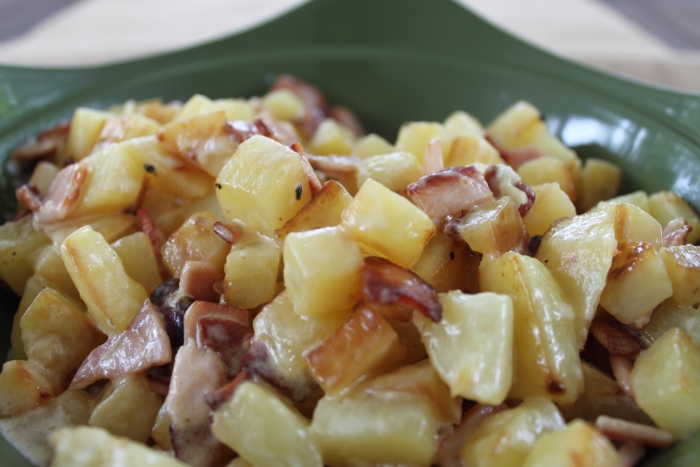
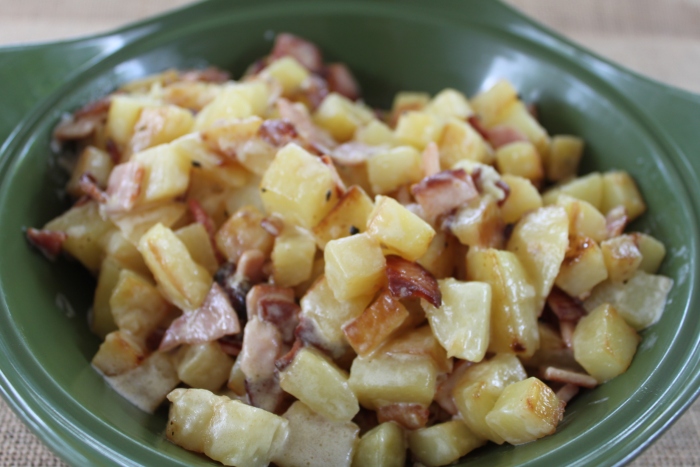

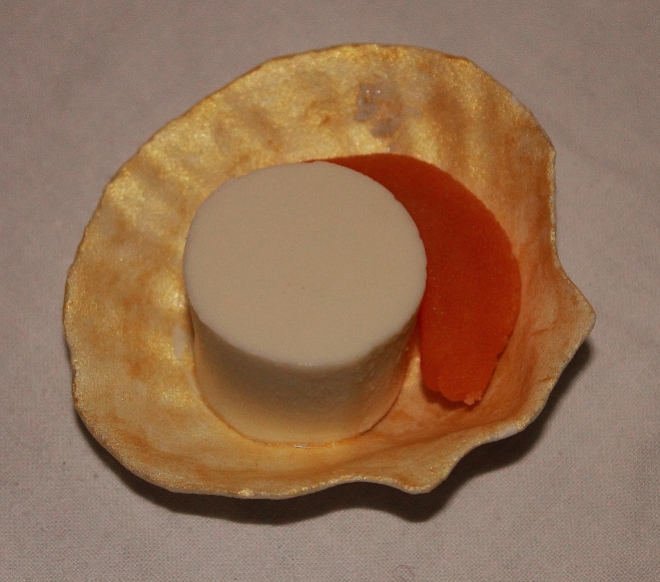
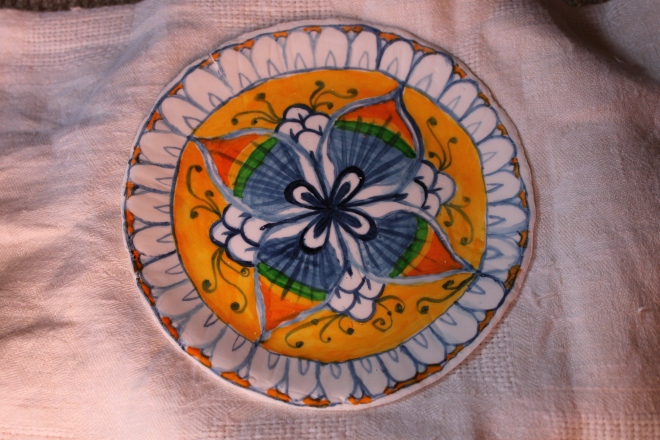







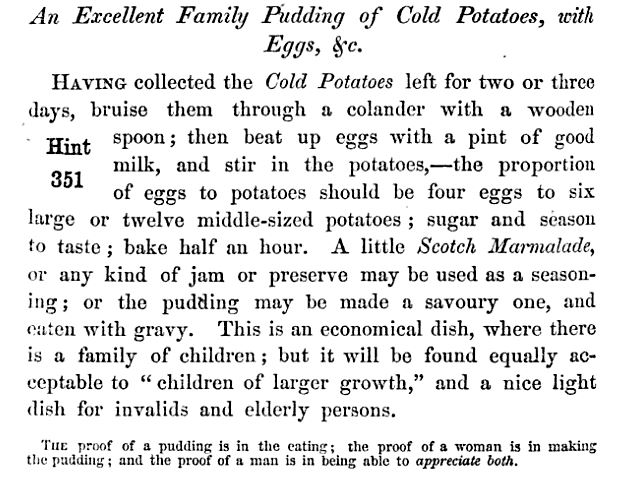

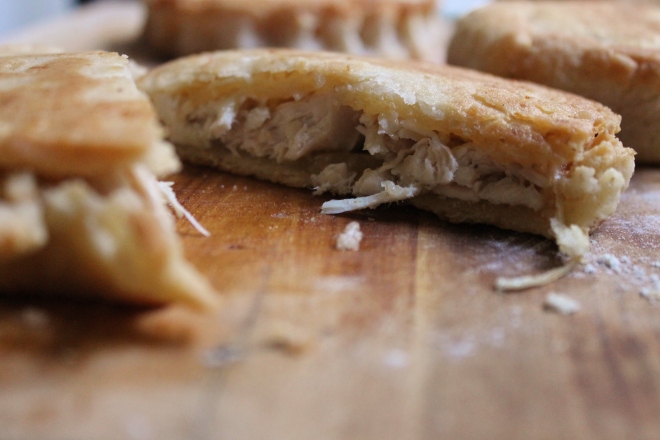
![A page from Ulrich von Richental's 15th century The Chronicle of the Council of Constance. Note the oven on wheels, that's real fast food! See page for author [Public domain], via Wikimedia Commons](https://turnspitandtable.files.wordpress.com/2015/06/konstanzer_richental_chronik_pastetenbaecker.jpeg?w=660&resize=660%2C892)
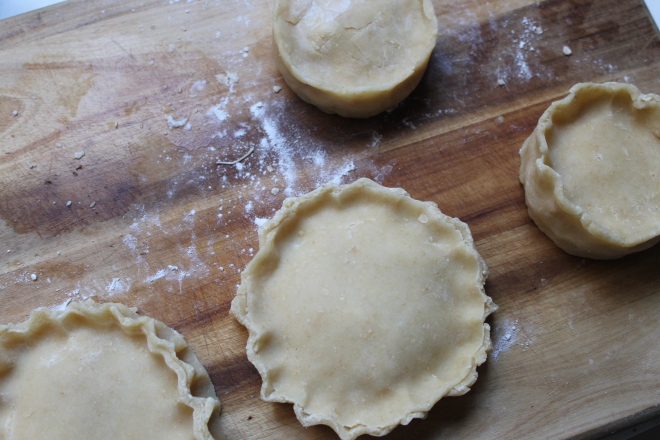
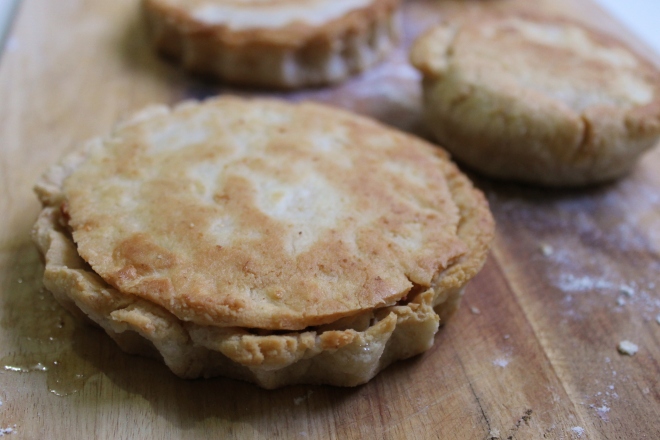
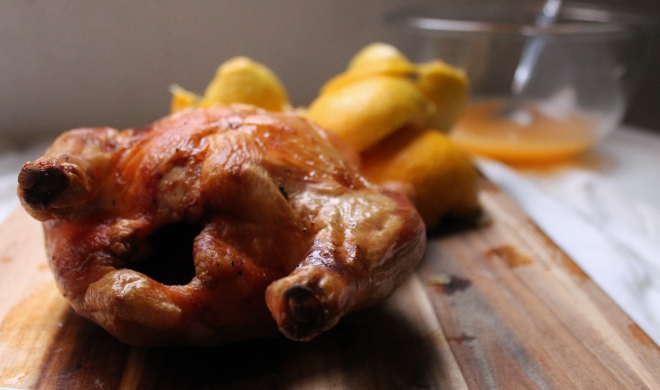
![By Franz Eugen Köhler, Köhler's Medizinal-Pflanzen (List of Koehler Images) [Public domain], via Wikimedia Commons](https://turnspitandtable.files.wordpress.com/2015/05/citrus_aurantium_-_kc3b6hlere28093s_medizinal-pflanzen-042.jpg?resize=473%2C577)
